The totora reeds were used to float on.

Pora, 1. Buoy made of
totora reeds formerly used to swim to Motu nui. 2.
Large basket for keeping things: he-to'o i te pora kai kiroto
ki te ana, he took a basket of food to the cave. Vanaga.
Poraa (po 2 - raa 2) day. Churchill. Pau.:
Kaporapori, a mat. Mgv.: pora, mat, scaffolding of a
raft. Mq.: poá, coconut leaves. Sa.: pola, plaited
coconut leaves. Ma.: porapora, a mat. Churchill.
... the first pair of trees (hauhau
and mahute) [in the immigrant lists according to
manuscript E], indispensable to the island's economy, are
followed by a second pair of plants that share the same
environment. They are ngaatu (Scirpus riparius)
and tavari (Polygonum acuminatum). Both grow in
the water lakes, used by the Easter Islanders for a variety of
purposes. Rushes (SPAN. totora)
were one of the most important raw materials on an island
lacking an ample supply of wood. Made into mats, rushes served
as beds, as packing material, and as material for the
construction of huts and canoes, and they were used to make
masks, hats, and many types of baskets. The planting of rushes
in the crater lakes is supposed to have been the work of the
culture hero Ure. Proceeding from Anakena, Ure
planted the top part of the plant in Rano Aroi, the stem
in Rano Raraku, and the bottom part in Rano Kau
(ME:364) ...
|
1 he hauhau. |
1 he mahute. |
1 he ngaatu |
|
Gaatu, totora reed. Vanaga.
Gaatu 1. Bulrush, reed. 2.
(gatu). Churchill.Gatu. Gaatu,
totora reed. Gatu: 1. To press, to tighten,
to squeeze. 2. To pack tight. 3. To pull suddenly,
to give a jerk. I ka hakarogo atu, ku eke á te
kahi, he gatu mai, as soon as he felt the tuna
be, he pulled in [the line] with a sharp jerk. 4. To
kick. 5. E gatu te hagu, to wait for
something impatiently (gatu, breath). 6.
Shortly, very soon. He tu'u gatu, he is
coming shortly, he is just about to arrive. Vanaga.
Bulrush, reed.
Gaatu (gatu) 1. To feel of, to pinch, to
throttle with the hands, to touch, to press (gaatu);
gatuga, pressure; gatugatu, to trample
down. T Mgv.: natu, to press out linen, to
squeeze a person or a sore place. Mq.: natu,
to pinch. Ta.: natu, to pinch, to bruise. 2.
To suppurate. 3. Gatu mai gatu atu, sodomy.
Gatua (gatu 1), tractable, to press.
Churchill. Scirpus riparius var.
paschalis. Barthel 2.
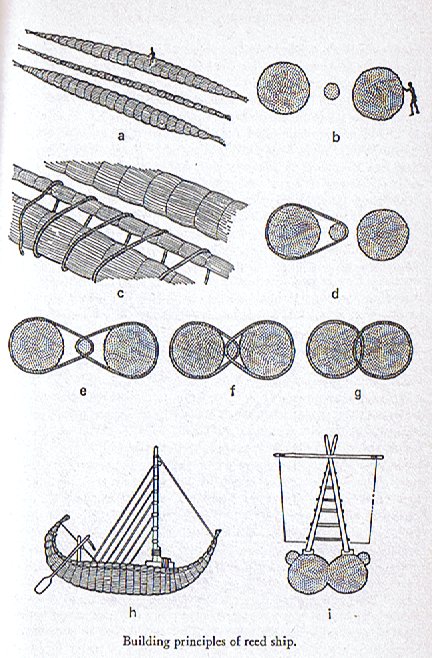
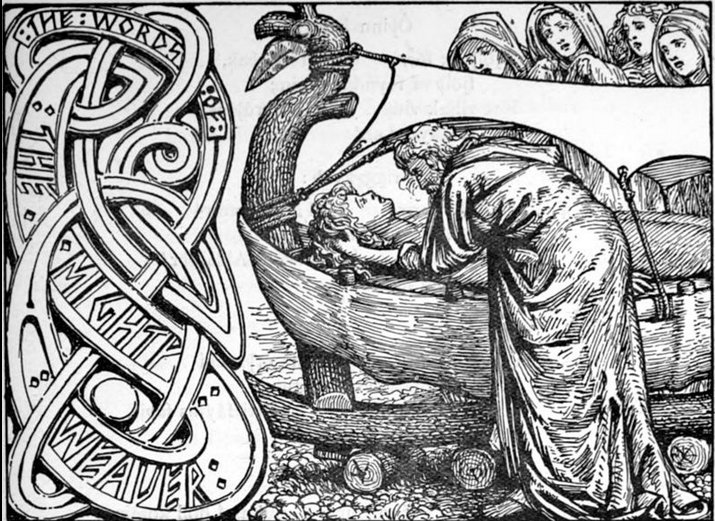
... All this,
which in so many ways parallels the normal imagery
of the Old World culture-hero myths, telling of the
one who is gone, dwells underground in a happy,
timeless land, as lord of the realm of the happy
dead, like Osiris, but will rise again, we
can read without surprise.
But what is surprising indeed was the manner of
Quetzalcoatl's actual return. The priests and
astrologers did not know in what cycle he was to
reappear; however, the name of the year within the
cycle had been predicted, of old, by Quetzalcoatl
himself. Its sign was 'One Reed' (Ce Acatl),
which, in the Mexican calendar, is a year that
occurs only once in every cycle of fifty-two. But
the year when Cortes arrived, with his company of
fair-faced companions and his standard, the cross,
was precisely the year 'One Reed'. The myth of the
dead and resurrected god had circumnavigated the
globe ...
|
1 |
Cipactli (alligator) |
11 |
Ozomatli (monkey) |
|
2 |
Ehecatl (wind) |
12 |
Malinalli (grass) |
|
3 |
Calli (house) |
13 |
Acatl (reed) |
|
4 |
Cuetzpallin (lizard) |
14 |
Ocelotl (jaguar) |
|
5 |
Coatl (serpent) |
15 |
Cuauhtli (eagle) |
|
6 |
Miquitztli (death) |
16 |
Coz-cacuauhtli (buzzard) |
|
7 |
Mazatl (deer) |
17 |
Ollin (movement) |
|
8 |
Tochtli (rabbit) |
18 |
Tecpatl (flint knife) |
|
9 |
Atl (water) |
19 |
Quiahuitl (rain) |
|
10 |
Itzcuintli (dog) |
20 |
Xochitl (flower) |
|
20 * 13 = 260 and 13 * 13 = 169 = 260 -
91.
 |
|
|
APRIL 8 |
9 (*19) |
10 (100 = 88 +
12) |
 |
 |
 |
|
Ga1-18 |
Ga1-19 |
Ga1-20 |
|
KHUFU
MINTAKA (Belt)
=
δ
Orionis,
υ
Orionis (82.4),
χ
Aurigae (82.5),
ε
Columbae (82.6)
*41 = *82.4 - *41.4 |
KHAFRE
Al Hak'ah-3 (Brand) /
Mrigashīrsha-5 (Stag's Head) /
Turtle Head-20 (Monkey) /
Mas-tab-ba-tur-tur (Little Twins)
ARNEB =
α Leporis, Crab Nebula = M1 Tauri
(83.0,
φš
Orionis (83.1),
HEKA =
λ Orionis,
ORION
NEBULA
= M42
(83.2),
φ˛
Orionis (83.6),
ALNILAM (String of
Pearls)
= ε Orionis
(83.7) |
MENKAURE
Three Stars-21 (Gibbon) /
Shur-narkabti-sha-shūtū-6 (Star in the Bull towards
the south)
/ ANA-IVA-9 (Pillar of
exit)
HEAVENLY GATE
= ζ Tauri,
ν
Columbae (84.0),
ω
Orionis (84.2),
ALNITAK (Girdle)
= ζ Orionis,
PHAKT (Phaet)
= α Columbae
(84.7) |
|
June 11 |
12 (163 = 136 +
27 = 263 - 100) |
13 (*84) |
|
°June 7 |
8 |
9 (*80) |
|
'May 15 (365 +
135 = 500) |
16 (136 = 8 * 29˝
- 100) |
17 (*57) |
|
The Julian calendar had been 10 days ahead at the
time when Gregory XIII launched his new calendar and
then 2 more (days ahead) would have to be subtracted
if the change from the Julian to the Gregorian
calendar had happened later at the time when the
King of Spain took command over Easter Island in 20
November (324) AD 1770. Which means 10 + 2 number of
taro varieties could have referred not only to a
change in the number of months but also to number of
days needed to add in order to return from the
Gregorian to the Julian dates.
|
|
"May 1 (121 = 11
* 11) |
2 |
3 (*43) |
|
... the real
surprise revealed by Bauval's astronomical
calculations was this: despite the fact that some
aspects of the Great Pyramid did relate
astronomically to the Pyramid Age, the Giza
monuments as a whole were so arranged as to provide
a picture of the skies (which alter their appearance
down the ages as a result of the precession of the
equinoxes) not as they had looked in the Fourth
Dynasty around 2500 BC, but as they had looked - and
only as they had looked - around the year
10,450 BC ...

.jpg)
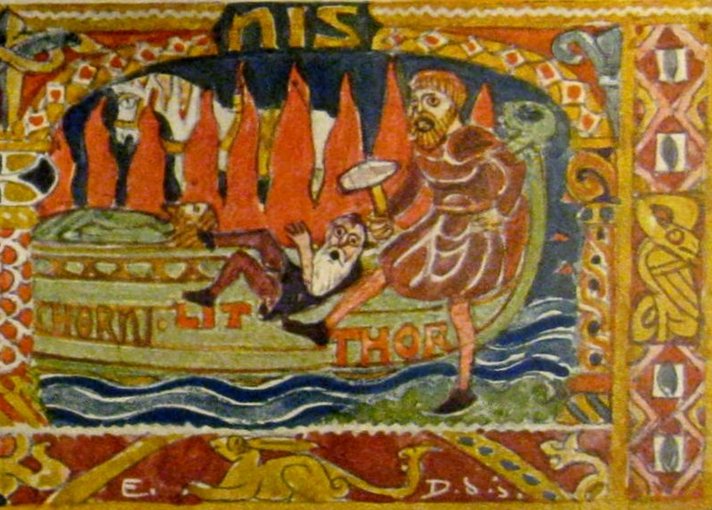
...
According to Gylfaginning, following the
murder of Baldr by Loki, the other gods brought his
body down to the sea and laid him to rest on the
ship. They would have launched it out into the water
and kindled a funeral pyre for Baldr but were unable
to move the great vessel without the help of the
giantess Hyrrokkin, who was sent for out of
Jötunheim. She then flung the ship so violently down
the rollers at the first push that flames appeared
and the earth trembled, much to the annoyance of
Thor. Along with Baldr, his wife Nanna was also
borne to the funeral pyre after she had died of
grief. As Thor was consecrating the fire with his
hammer Mjolnir, a dwarf named Litr began cavorting
at his feet. Thor then kicked [gaatu] him
into the flames and the dwarf was burned up as well
... |
|
CLOSE TO THE FULL MOON: |
|
OCT 8 |
9 |
10 (283) |
|
Al Shaula-17
ALWAID (Mother Camels) =
β
Draconis, MAASYM (Wrist) =
λ
Herculis
(265.1),
SHAULA
(Sting)
=
λ
Scorpii
(265.3),
KUMA =
ν
Draconis
(265.6),
σ
Arae (265.9)
HAMAL (α
ARIETIS) |
RAS ALHAGUE
(Head of the Serpent Charmer)
= α Ophiuchi
(266.1),
SARGAS = θ Scorpii (266.3),
μ Ophiuchi, π Arae (266.5),
NAN HAE (Southern Sea) = ξ Serpentis
(266.6), AL
DHĪLI (The Wolf)
= ω Draconis,
ι Herculis (266.7) |
λ
Arae (267.1),
GIRTAB (Seizer)
=
κ Scorpii,
ο
Serpentis (267.6),
DSIBAN (Wolf Pair)
=
ψ
Draconis
(267.9) |
|
Dec 11 (345) |
12 |
13 |
|
°Dec 7 (*261 =
9 * 29) |
8 |
9 (343 = 7 * 7
* 7 |
|
'Nov 14 (318) |
15 |
16 (*240) |
|
"Oct 31 (304) |
"Nov 1 (*225) |
2 |
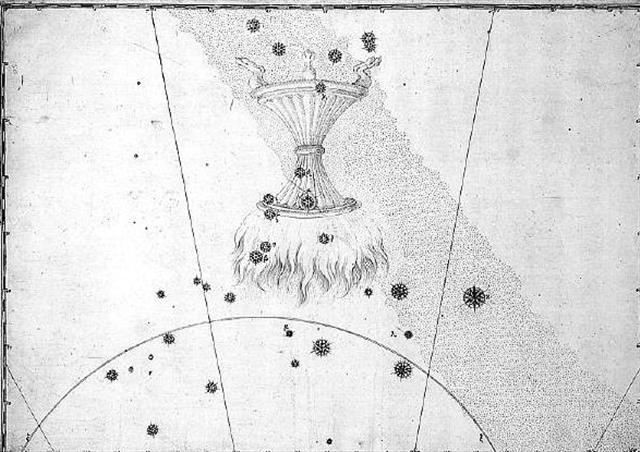
... It is known that in the final battle of the
gods, the massed legions on the side of 'order' are
the dead warriors, the 'Einherier' who once fell in
combat on earth and who have been transferred by the
Valkyries to reside with Odin in Valhalla - a theme
much rehearsed in heroic poetry. On the last day,
they issue forth to battle in martial array. Says
Grimnismal (23): 'Five hundred gates and forty more
- are in the mighty building of Walhalla - eight
hundred 'Einherier' come out of each one gate - on
the time they go out on defence against the Wolf.'
That makes 432,000 in all, a number of significance
from of old. This number must have had a very
ancient meaning, for it is also the number of
syllables in the Rigveda. But it goes back to the
basic figure 10,800, the number of stanzas in the
Rigveda (40 syllables to a stanza) [40 * 270 =
10800] which, together with 108, occurs insistently
in Indian tradition, 10,800 is also the number which
has been given by Heraclitus for the duration of the
Aiōn, according to Censorinus (De die natali, 18),
whereas Berossos made the Babylonian Great Year to
last 432,000 years. Again, 10,800 is the number of
bricks of the Indian fire-altar (Agnicayana). 'To
quibble away such a coincidence', remarks Schröder,
'or to ascribe it to chance, is in my opinion to
drive skepticism beyond its limits.'
...
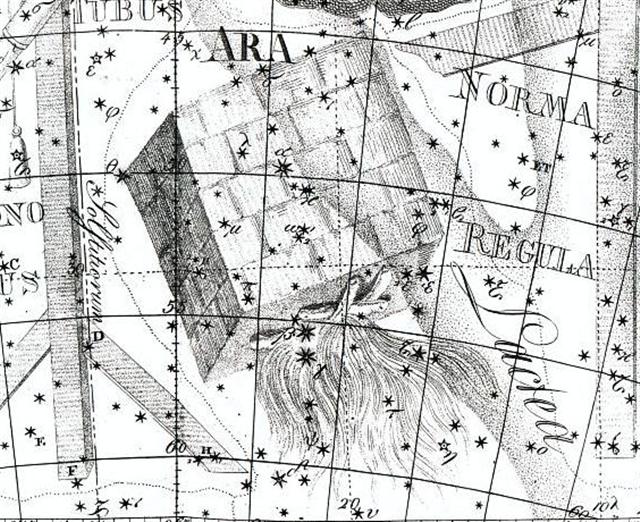 |
Half a year after Heka (June 12, 163) - cfr he ká
-
Ká. 1. To light a fire in order to cook in the earth
oven (see umu): he-ká i te umu, he-ká i te kai.
2. Figuratively: to fire up the soul. To put oneself in a
fury (with manava): ku-ká-á toona manava he
has become furious. Vanaga.
was the inverted Fire Altar (December 11, 345); CHOO
(Club or Staff) = α Arae (*264.9) - Heka (*83.2) = *181.7
right ascension days.

|
1 |
Cipactli (alligator) |
11 |
Ozomatli (monkey) |
|
2 |
Ehecatl (wind) |
12 |
Malinalli (grass) |
|
3 |
Calli (house) |
13 |
Acatl (reed) |
|
4 |
Cuetzpallin (lizard) |
14 |
Ocelotl (jaguar) |
|
5 |
Coatl (serpent) |
15 |
Cuauhtli (eagle) |
|
6 |
Miquitztli (death) |
16 |
Coz-cacuauhtli (buzzard) |
|
7 |
Mazatl (deer) |
17 |
Ollin (movement) |
|
8 |
Tochtli (rabbit) |
18 |
Tecpatl (flint knife) |
|
9 |
Atl (water) |
19 |
Quiahuitl (rain) |
|
10 |
Itzcuintli (dog) |
20 |
Xochitl (flower) |
|


... 'The old explanation,
which has again been revived by Halévy,
is that it denotes an 'ape,' the
character Q being taken to
represent an ape with its tail hanging
down. It may also be referred to a
Talmudic root which would signify an
'aperture' of some kind, as the 'eye of
a needle,' ... Lenormant adopts the more
usual explanation that the word means a
'knot' ... |
The Mayas perceived time running from right to left and
therefore we can understand that the 'Monkey' creature above (Aztec:
Ozomatli) was indicating the return of the Sun. For he is
hanging from a sky band with 3 glyphs, moving from 'barred',
to 'night', and then finally to 'Sun returning'.
|
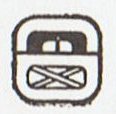 |
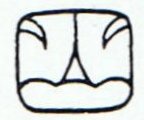 |
 |
|
uo ('imprisoned') |
akbal
(night) |
quincunx (yellow) |
... The man in his claws had been
immobilized like a prisoner:

... Actually, when still young, this
Vogulian 'World-observing Man' - Avolokiteshvara
himself, this great and worshiped deity of Buddhist
countries - was, like Kullervo, a much-plagued
orphan, first in the house of his uncle, then in the
house of 'the Russian' and in that 'of the Samoyed'.
After years of misery - quite
specific 'measured' misery - he kills all his
tormentors. The revenge he takes if for himself. His
father, who had lowered down the beloved son from the
sky in a cradle, remains aloft
...
... From this I conclude: The man who
observes the whole world is the sun. When he is young he
has to be inside 3 houses (i.e. he cannot be seen). Each
house represents a month. His
uncle owns the first month. I.e. the old one is still in
rule. Then the rule of his uncle is over and he moves to
the house of 'the Russian' ...
... in the house of 'the Russian' he
is kept in the door hinge (in the English translation
this and other details are blurred to insignificance),
and dishwater is emptied upon him. To be damned to play
door hinge is one of the hellish punishments in Egypt,
because the hinge is supposed to turn in the victim's
eye ...
... The door hinge clearly refers to the
time of Janus. If December is the month still ruled by
his uncle, then January will be the house of the
Russian. Moreover, drilling in the eye should mean
creating new fire ...
"... we see the Xul-animal, all his facial
marks appearing, hanging by his tail from the
sky-band. With tail and both paws he holds flaming
torches. Above in the text [Dresden Codex, 55.g.] we
can see our form 19.3.1;

the superfix is a club, constantly appearing as an
instrument of attack; it is neither spear nor knife,
and also shows the same marks as are seen on wooden
posts, for the knots; the prefix we shall later see
defined as the conventionalized flames of firewood
... These three elements united, the cauac,
or Storm, relámpago, rayo or lightning
bolt as rendered in the above cited vocabularies,
with the club or stick as superfix, and the flames
as prefix, give a complete compound for
'thunderbolt' ..." (William Gates, An Outline
Dictionary of Maya Glyphs.)
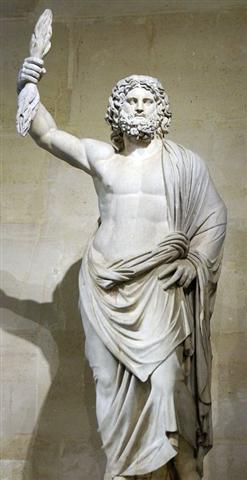
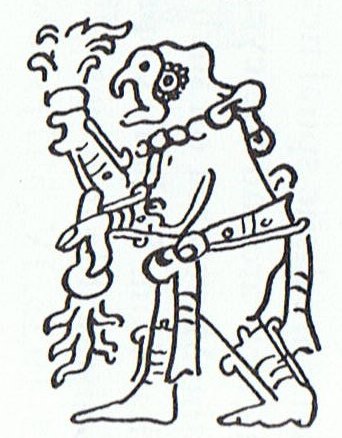
|






.jpg)

.jpg)











